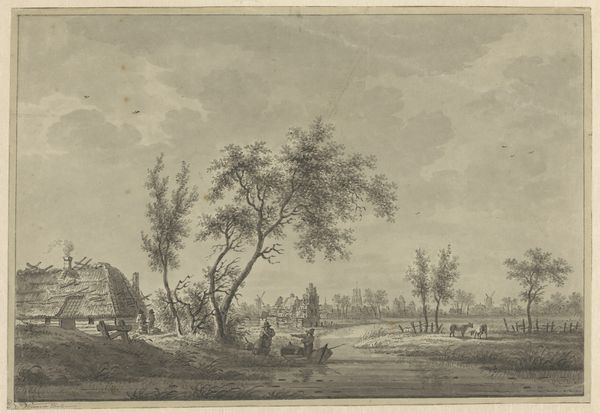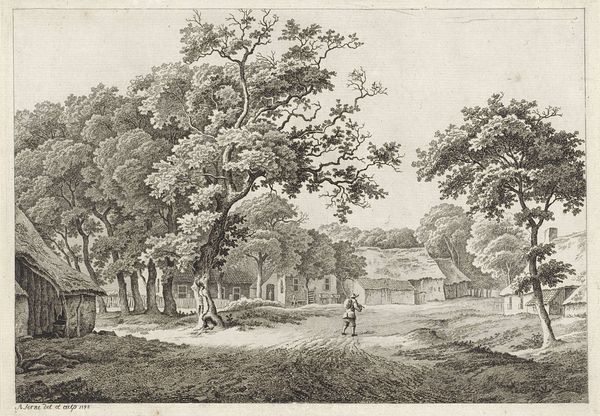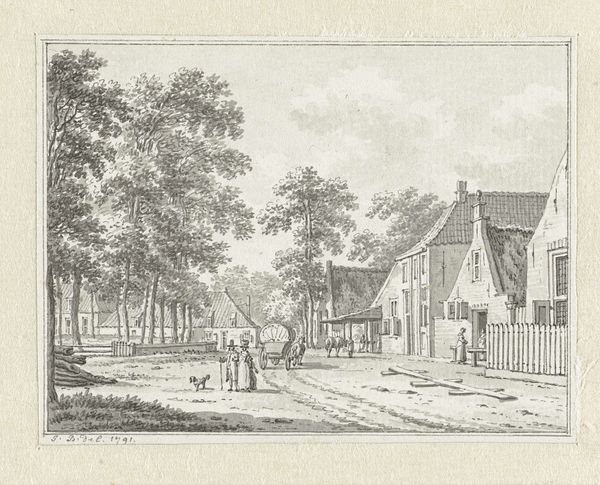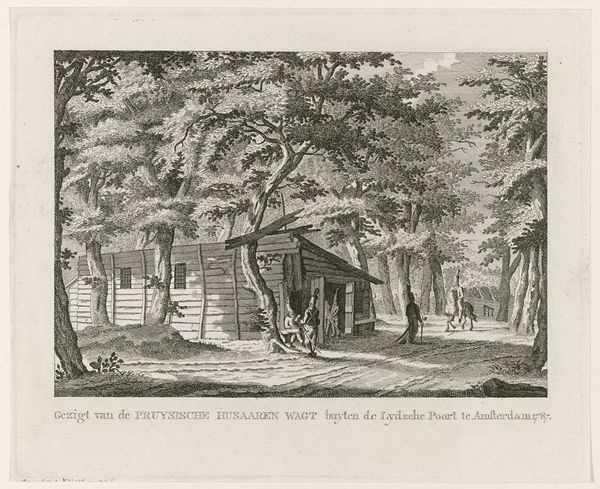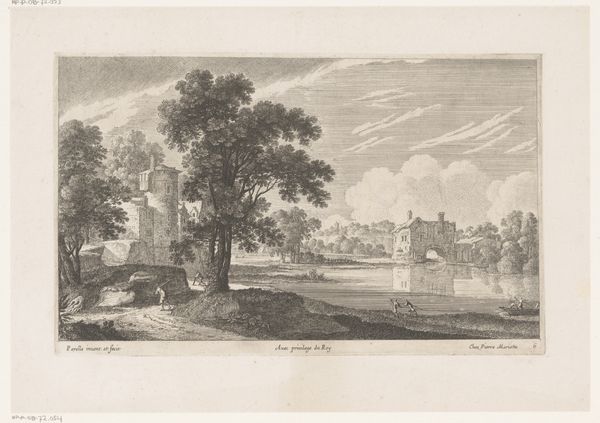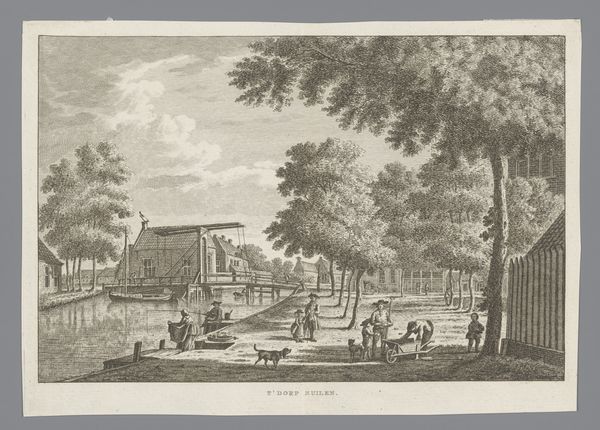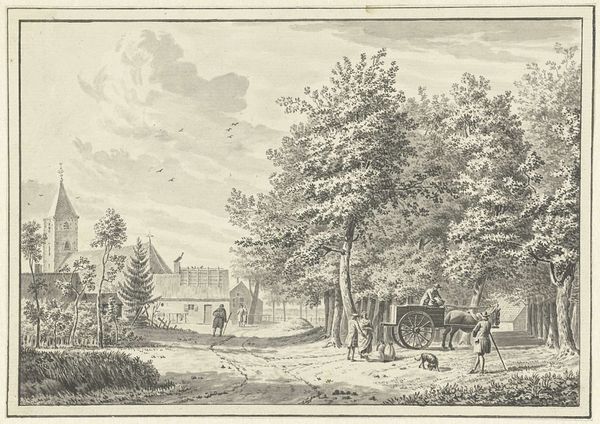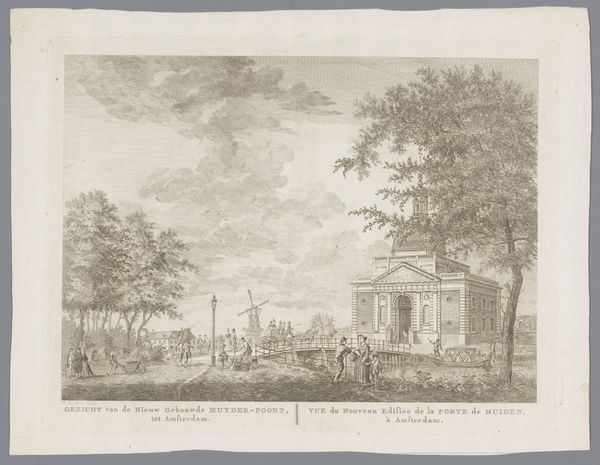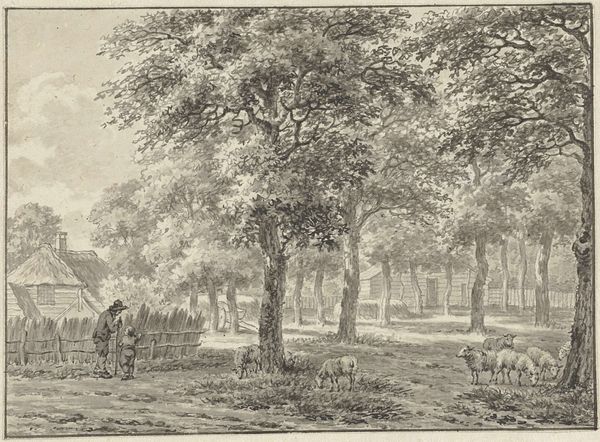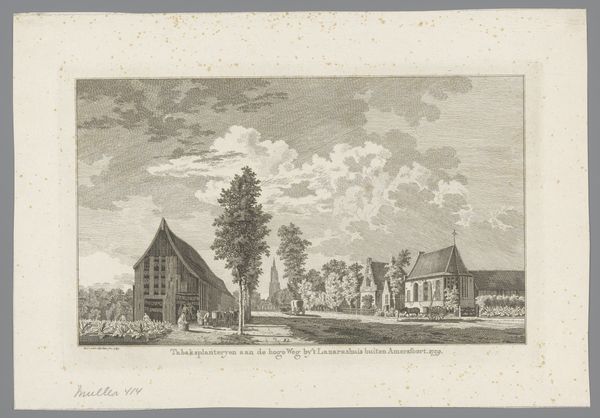
print, etching, engraving
#
dutch-golden-age
# print
#
pen sketch
#
etching
#
pencil sketch
#
landscape
#
pen work
#
cityscape
#
engraving
Dimensions: height 259 mm, width 400 mm
Copyright: Rijks Museum: Open Domain
Editor: This is "Gezicht op de Zuidwest-Binnensingel (Zuidwal) te Den Haag" by Paulus Constantijn la Fargue, created in 1764. It’s an etching, engraving, and print showing a cityscape in The Hague. I'm struck by how this seemingly tranquil scene hints at the complex socio-economic landscape of the time. What do you see in this piece, especially concerning the everyday life depicted? Curator: Beyond the picturesque view, I see a carefully constructed narrative about 18th-century Dutch society. The division between the wealthy inhabitants in their brick homes on one side and the working class operating the barges on the other subtly hints at class structures. Notice how the composition places the elite slightly elevated. How might this spatial arrangement reflect power dynamics? Editor: I see what you mean. The composition does emphasize a separation. But I wonder, are we reading too much into it? Perhaps it's just a literal representation of the city's layout. Curator: Perhaps. But as art historians, we must question whose stories are being told and how. These images served a purpose, often to reinforce certain social norms. How does depicting laborers as part of a pleasing landscape naturalize their labor, perhaps even obscuring potential injustices? Editor: That's a really interesting point. It’s like their presence is being normalized or romanticized, masking the harsh realities they likely faced. I hadn't considered that before. Curator: Precisely. And the "neutrality" of landscapes often disguises complex power relationships and the historical narratives of labor, capital, and class. Considering those issues invites us to look more critically at seemingly innocent images. Editor: Thank you. I’ll definitely be more aware of the implied narratives within seemingly straightforward depictions going forward. Curator: Indeed. Thinking about the intersection of art and social history, even in a serene cityscape, makes us question the status quo and reveal hidden meanings.
Comments
No comments
Be the first to comment and join the conversation on the ultimate creative platform.

